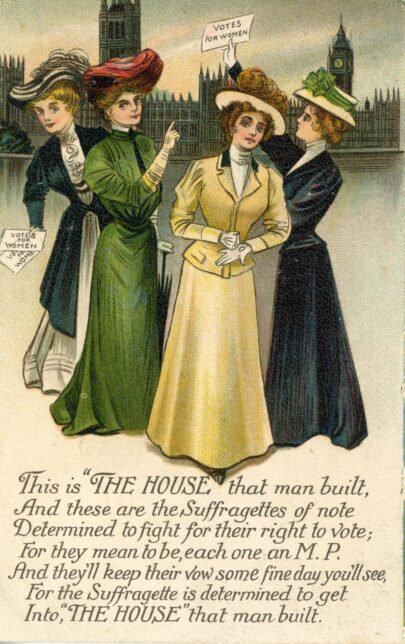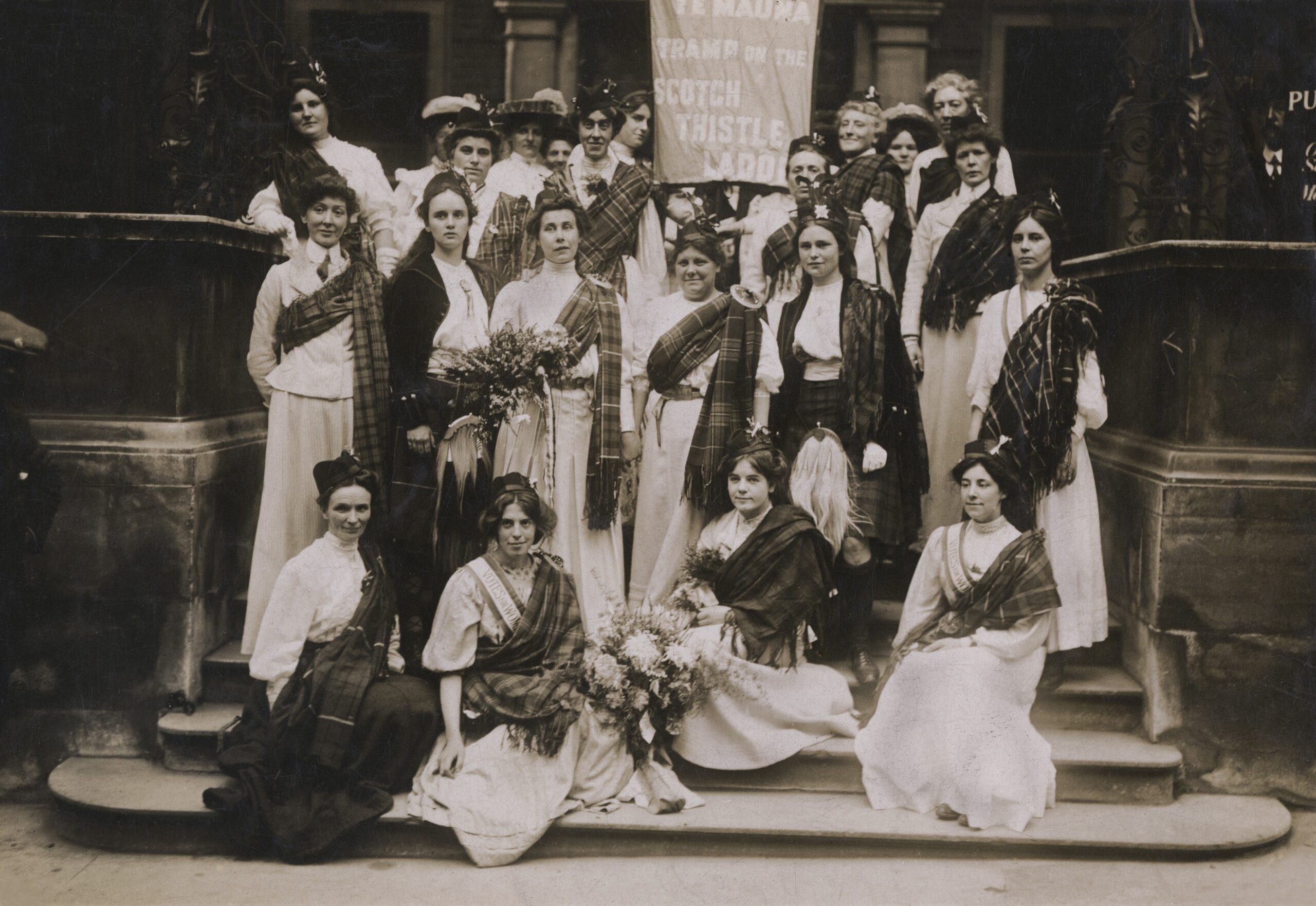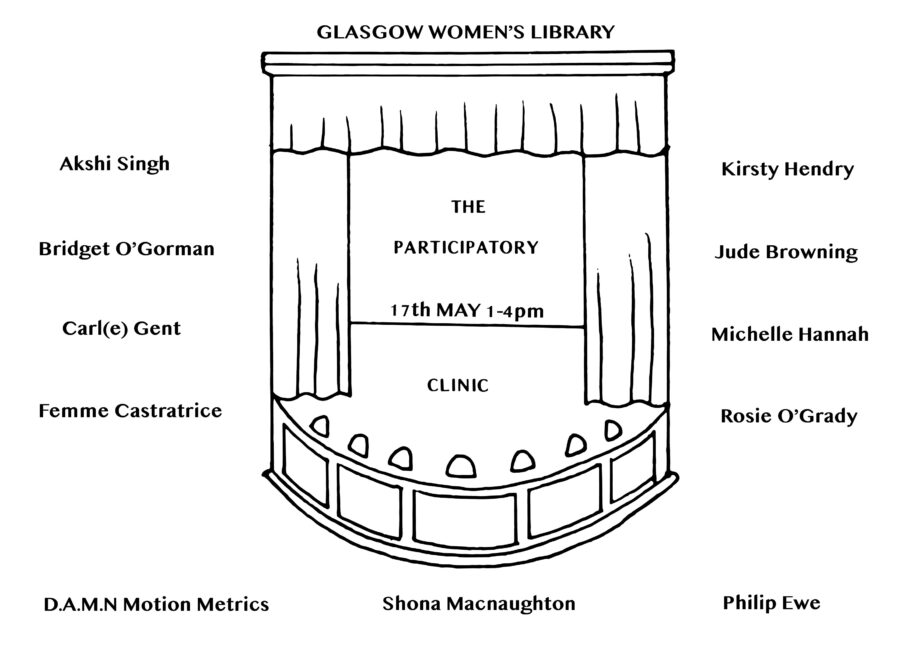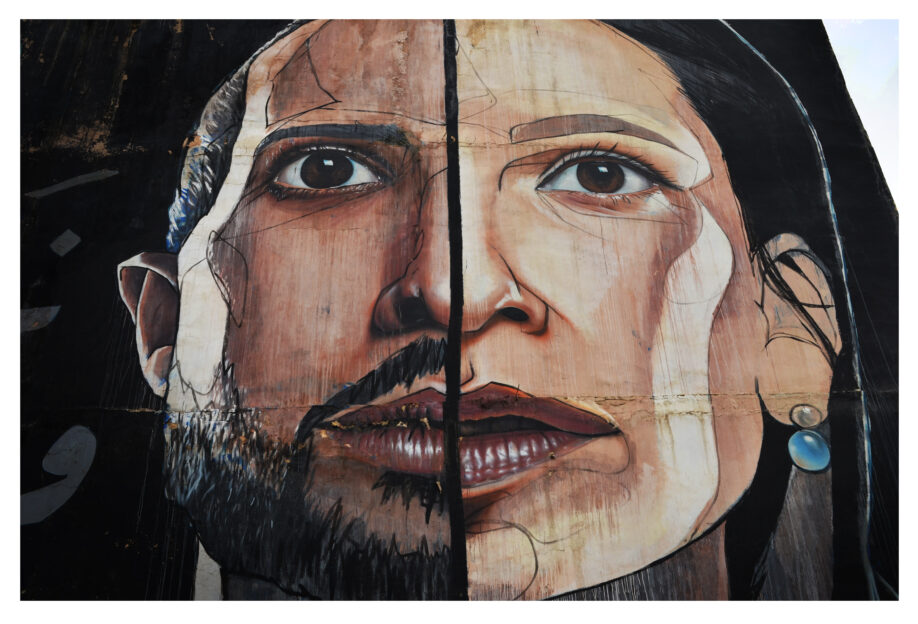The fight for women’s suffrage in the United Kingdom grew and gained momentum throughout the Victorian era. The National Union of Women’s Suffrage Societies (NUWSS) formed in 1897, bringing together separate movements across Britain.
In 1903, the Women’s Social and Political Union (WSPU) was founded, heralding the start of a militant campaign within the wider suffrage movement. WSPU activists, known as suffragettes from 1906, engaged in all sorts of law-breaking activities to raise the profile of the movement. Examples of civil disobedience included public demonstrations, mass window smashing, damaging artworks, arson and bombing.
At the time, these actions were considered shocking and divided public opinion, but suffragettes remained resolute. Thousands were arrested, imprisoned and force-fed. One of those women was Maud Joachim. We are proud to display Maud’s hunger strike medal, awarded by the WSPU and recently acquired for our collections. For the duration of the physical exhibition at GWL (1st February to Friday 31st May 2024) Maud’s medal sat alongside medals awarded to Glasgow suffragettes Margaret and Frances McPhun, kindly loaned by their family.
The right to vote was finally granted to some women in 1918. While the prominent role of women during the First World War played its part, along with the non-militant actions of other suffragists, it is important that we remember the tenacity and courage of the suffragettes. This exhibition honours them all.
Connected Posts
The Scottish Women’s Suffrage Movement
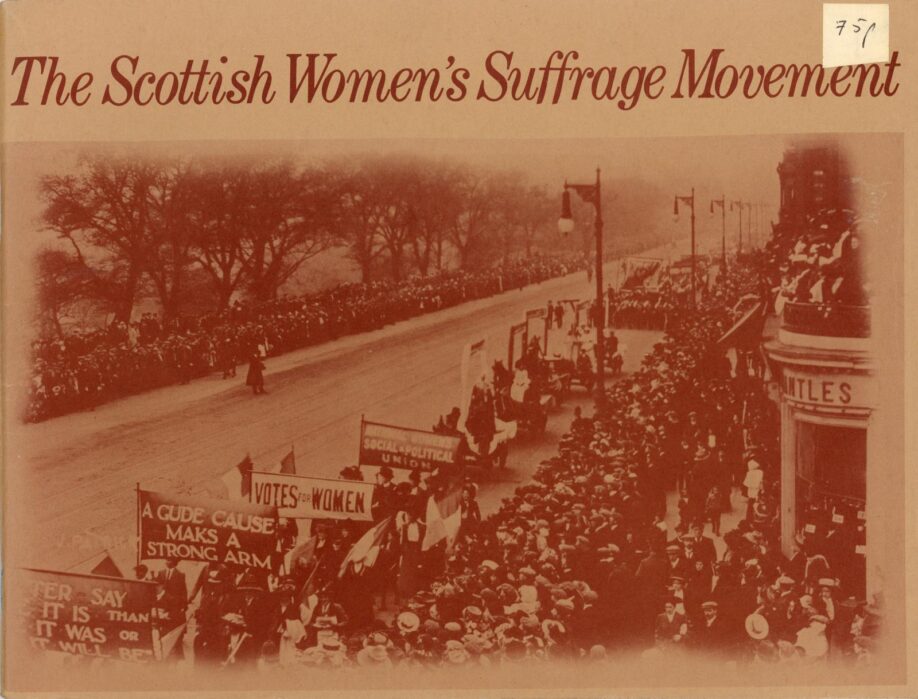
Publication by Elspeth King, which features this image, captioned: ‘The Scots contingent which greeted Mary Phillips on her release from Holloway Prison, March 1908. In the centre is “General” Flora Drummond. The full message of the banner reads: “To Mr Asquith. Ye Mauna Tramp on the Scotch Thistle laddie.” ’
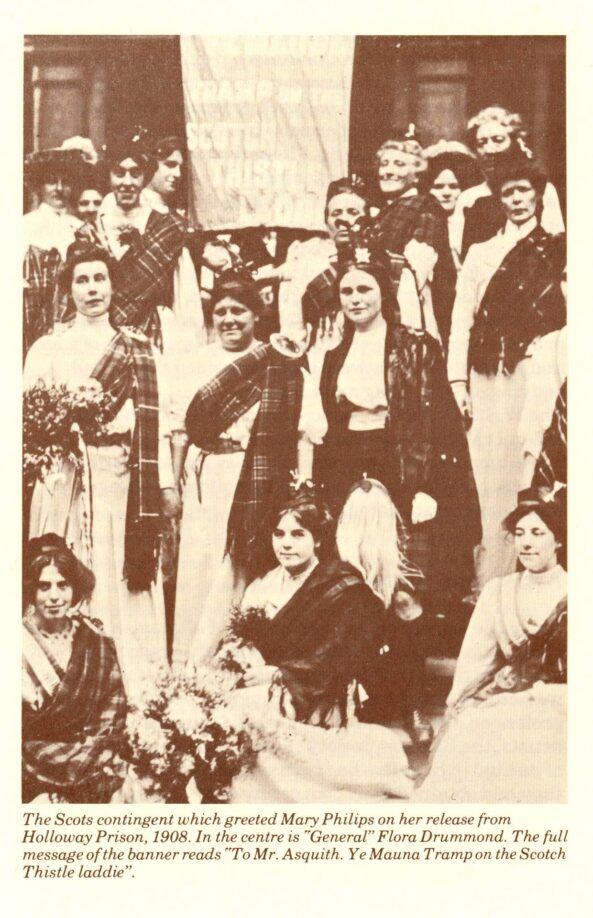
Yours in the Cause
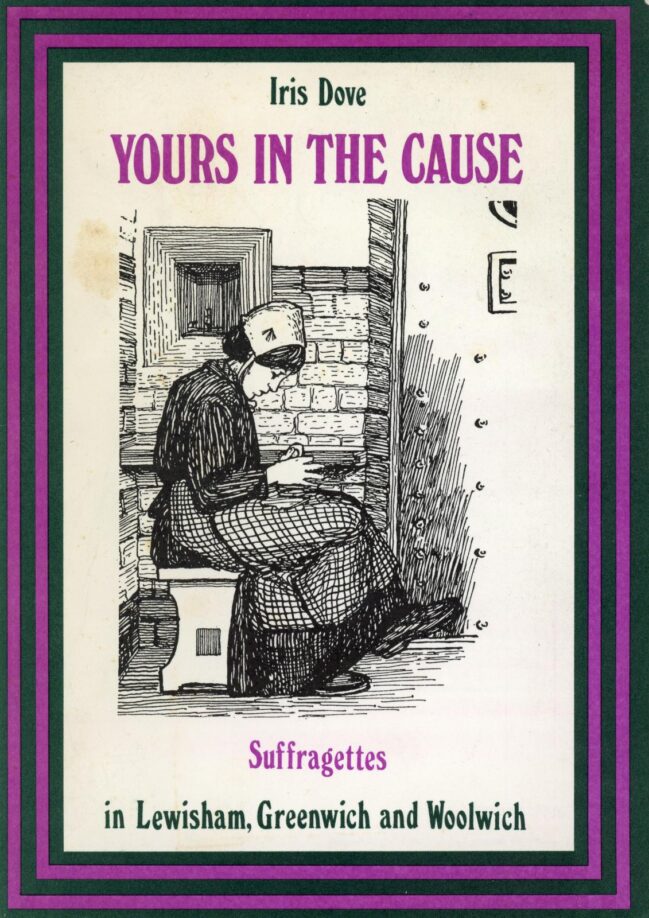
In this booklet, Iris Dove writes about suffragettes in the Lewisham, Greenwich and Woolwich areas of London. The cover image is a sketch made by Sylvia Pankhurst in Holloway Prison, which was published in the Votes for Women newspaper on 7th January 1909.
Caroline Phillips: Aberdeen Suffragette and Journalist
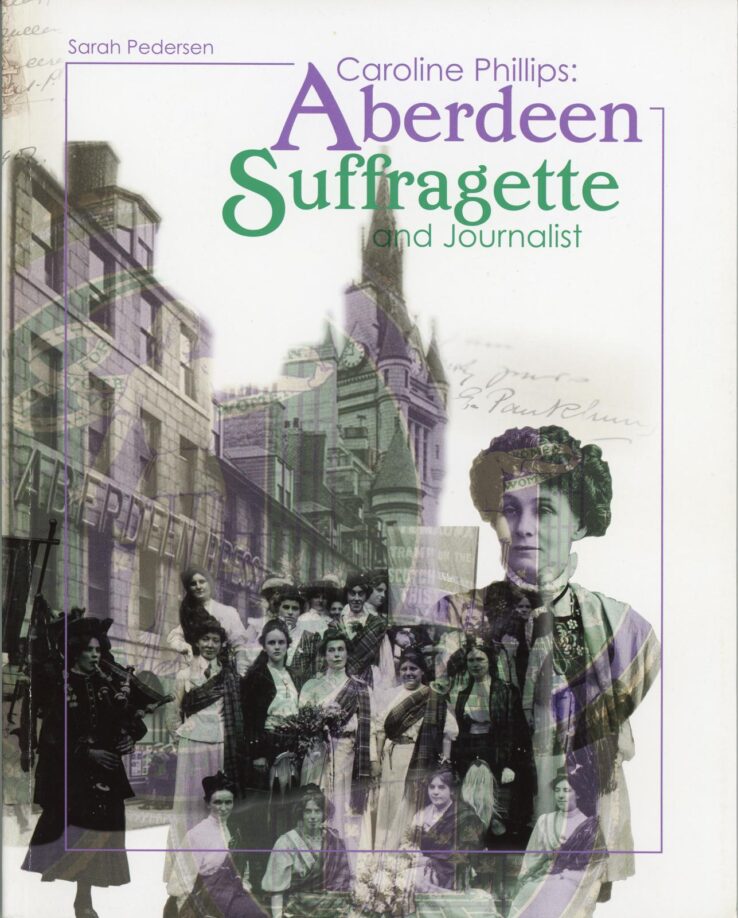
This publication by Sarah Pederson explores the life and work of Caroline Phillips in the context of the women’s suffrage movement in the north east of Scotland.
Women and the New Franchise Bill (1884)
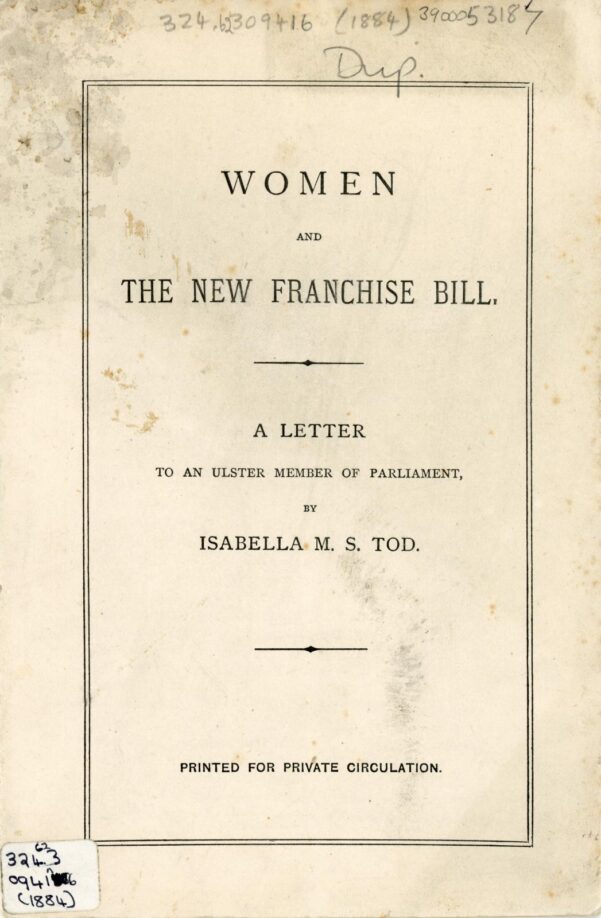
Originally printed for private circulation, this pamphlet is subtitled ‘A Letter to an Ulster Member of Parliament’ by Isabella M. S. Tod, dated March 1884. The letter concludes: “I fear that if some of our legislators do not realise that if our demand is a quiet and unexcited demand, it is also a persistent one. No class that has once decidedly asked for franchise has ever accepted a defeat.”
Suffrage Fallacies: Sir Almroth Wright on “Militant Hysteria”
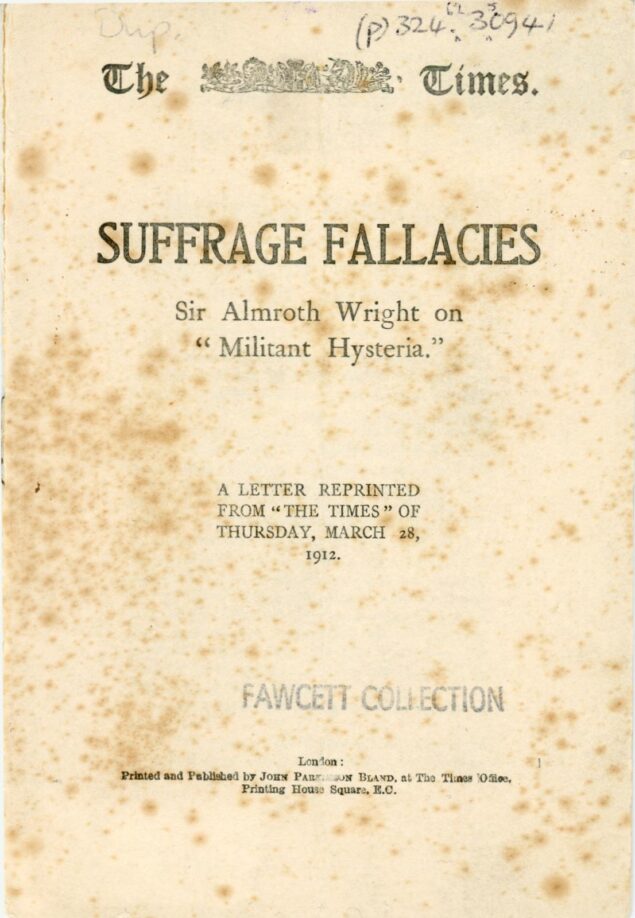
As support for the women’s suffrage movement grew in some quarters, many people remained strongly against female enfranchisement. This derogatory letter was reprinted from “The Times” newspaper of 28th March 1912. Its author describes the cause as “fatuous doctrine” and a “hysterical revolt”, claiming that its supporters suffer from “mental disorder”.
The Commons Debate on Woman Suffrage (1908)
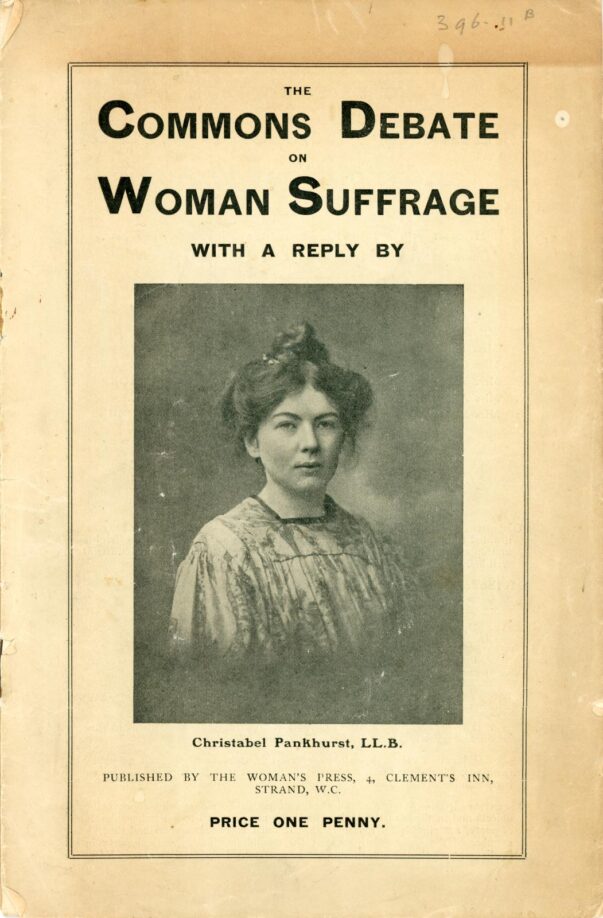
By the time of this debate, the WSPU had introduced militant tactics. An introductory note by Christabel Pankhurst (parodied in the postcard below as “Miss Hissy”) states: “The second reading of the Women’s Enfranchisement Bill has been carried by a large majority, and our object now is to force the Government to adopt the Bill.”
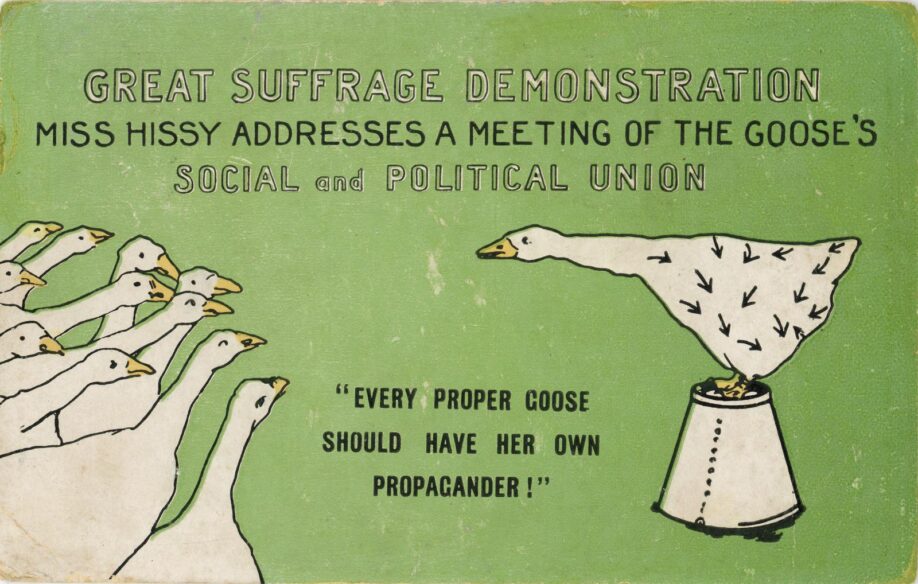
Past Participants: a lesbian diary for 1984: Ethel Smyth
"Illustrated with biographies and pictures of strong lesbians from Britain's past - artists, dancers, printers, politicians, pirates - all women who derived inspiration and strength from loving women."
Militant suffragette and open lesbian Ethel Smyth is famed for composing The March of the Women (1911) to words by Cicely Hamilton. After serving time in Holloway, Ethel composed her final major work, a vocal symphony titled The Prison. Another suffragist who used music to further the cause was Jessie M. Soga. Jessie’s musical fundraising events included one held in Glasgow in March 1908 to welcome released Scottish prisoners from Holloway.
The Life of Emily Davison: An Outline
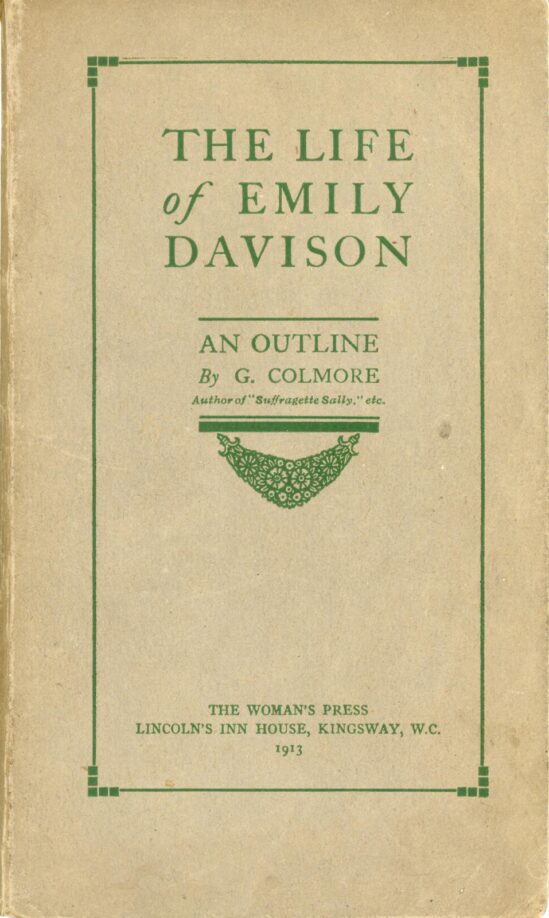
English suffragette Gertrude Baillie-Weaver also used the pen name Gertrude Colmore to publish fiction such as Suffragette Sally. Inserted inside this book was a clipping from The Suffragette newspaper about the sermon given in commemoration of Emily Wilding Davison, and an ‘In Memoriam’ leaflet describing her mistreatment by the British prison system.
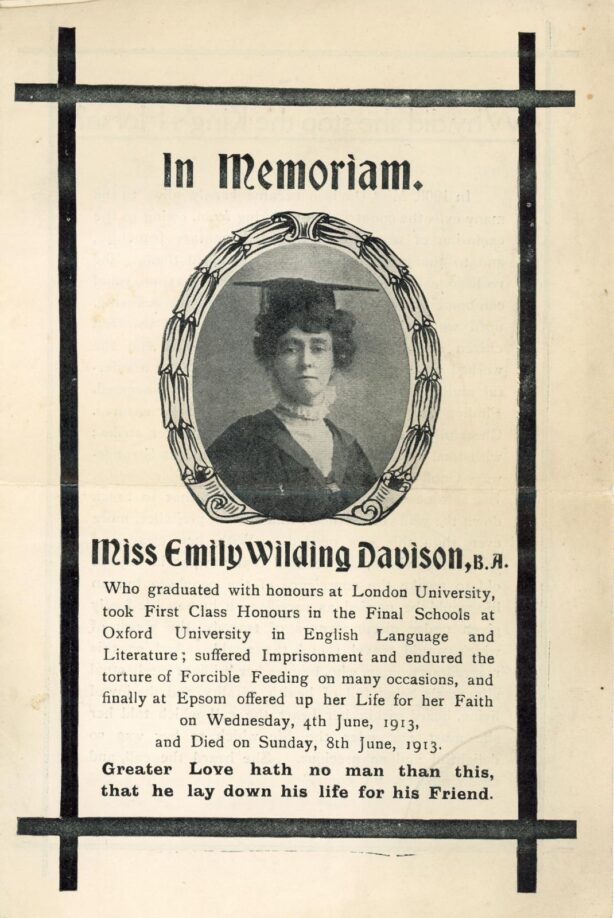
Sculpture: In the hands of the proletariat
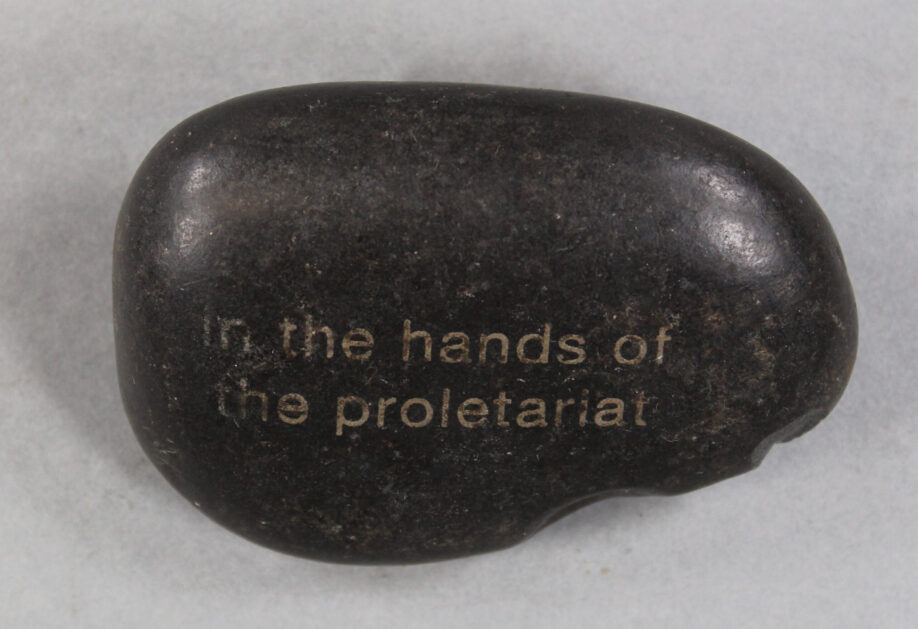
Polished stones marked with the words “in the hands of the proletariat” made for Glasgow Women’s Library by New Zealand-based artist Fiona Jack, the great grand-niece of Scottish activist and […]
Engraved, polished stones created by New Zealand-based artist Fiona Jack in commemoration of her great grand-aunt, the Scottish suffragette Helen Crawfurd. Helen was jailed three times for militant political activism, including two month-long prison sentences for taking part in window smashing campaigns. While imprisoned in 1914, Helen went on an eight day hunger strike.
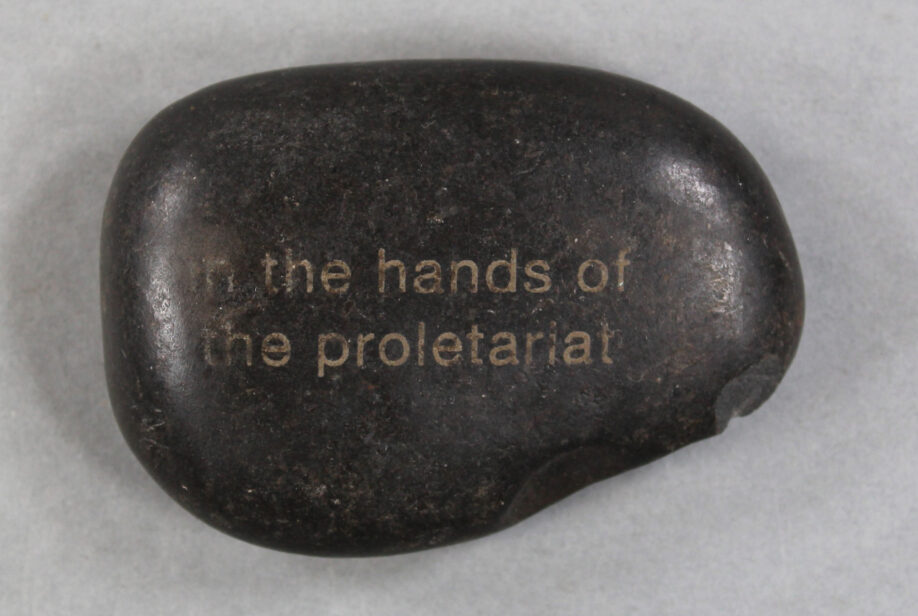
Sermons in Stones
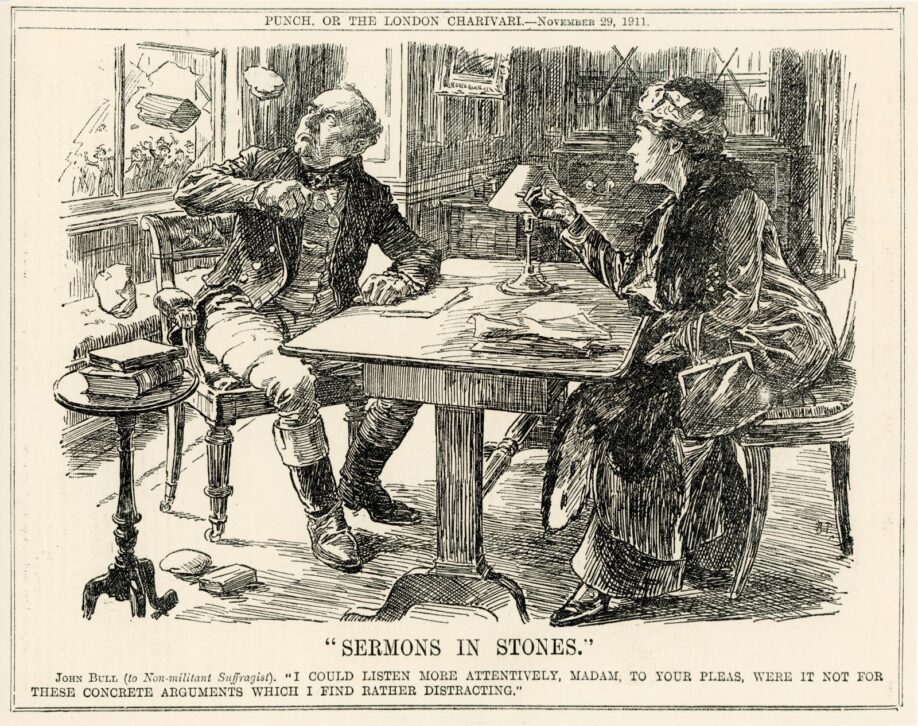
Published in Punch, or The London Charivari, 29th November 1911. The caption reads: ‘John Bull (to Non-militant Suffragist): “I could listen more attentively, Madam, to your pleas, were it not for these concrete arguments which I find rather distracting.’ John Bull was a character used to personify the United Kingdom (and England in particular), often in political cartoons.
Hunger Strike Medal: Maud Joachim
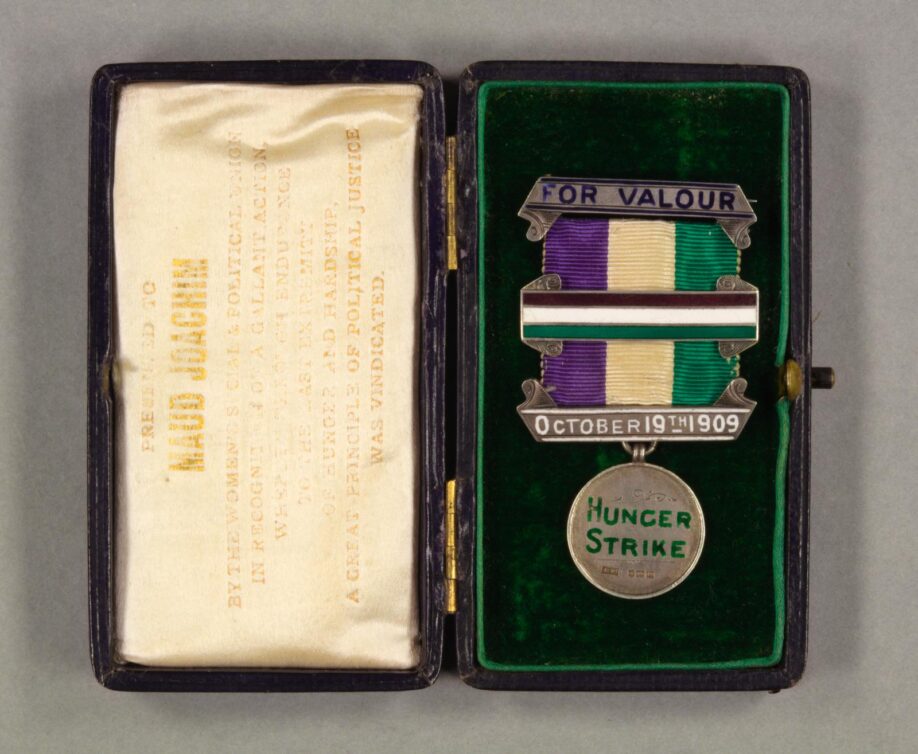
On 20th October 1909, Maud Joachim was arrested in Dundee along with fellow suffragettes Adela Pankhurst, Helen Archdale, Catherine Corbett and Laura Evans. They had interrupted a meeting led by Winston Churchill the previous day by leading a crowd and shouting “This way! Votes for Women!” Maud was sent to prison, where she was released after a four day hunger strike. She was force fed while serving another prison sentence in March 1912.
Panko Playing Cards
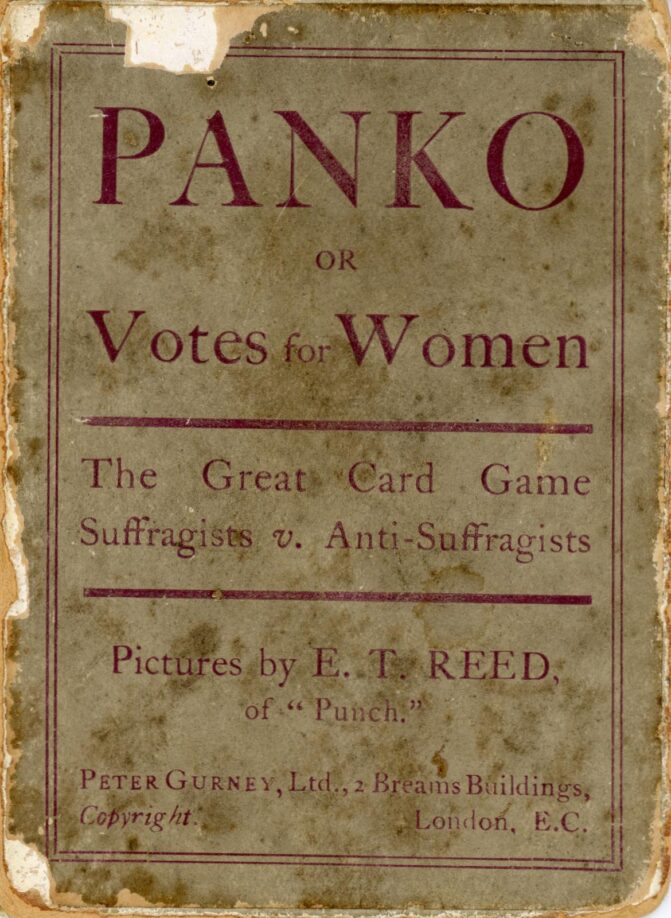
Illustrated by Punch magazine’s Edward Tennyson Reed and made by Peter Gurney of London. Also known as ‘Votes for Women’, the game pits opponents and supporters of women’s suffrage against each other. It was widely advertised and distributed by the WSPU.
Suffragette Pennies
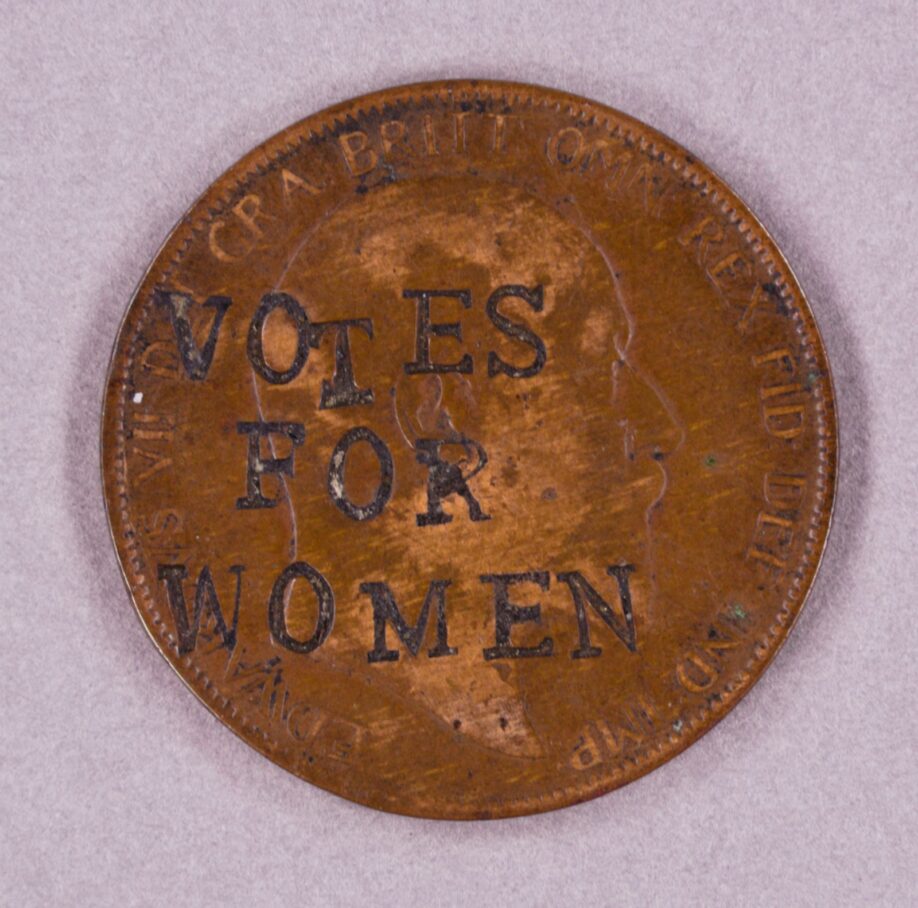
Defacing coins was a criminal act that could lead to a prison sentence. Using small change meant that the coin was more likely to remain in circulation for years. A few coins with ‘VOTES FOR WOMEN’ hand stamped over the king’s head have been attributed to the suffragette movement but many fakes are in circulation. Of the three coins in our collection, only the 1906 issue is believed to be a genuine ‘suffragette penny’, stamped around 1913.
They Went To Prison

Compiled by the Suffragette Fellowship, c.1950–60, this document draws from the memories of former suffragettes so not all prisoners are named. Among those listed are: Janie Allan, Helen Crawfurd, Emily Wilding Davison, Flora Drummond, Maud Joachim, Florence [most likely Frances] and Margaret McPhun, Ethel Moorhead, Flora Murray, Adela, Christabel, Emmeline and Sylvia Pankhurst, Mary Phillips and Ethel Smythe.
Print: To the Dear Love of Comrades: in Memory of Flora Murray
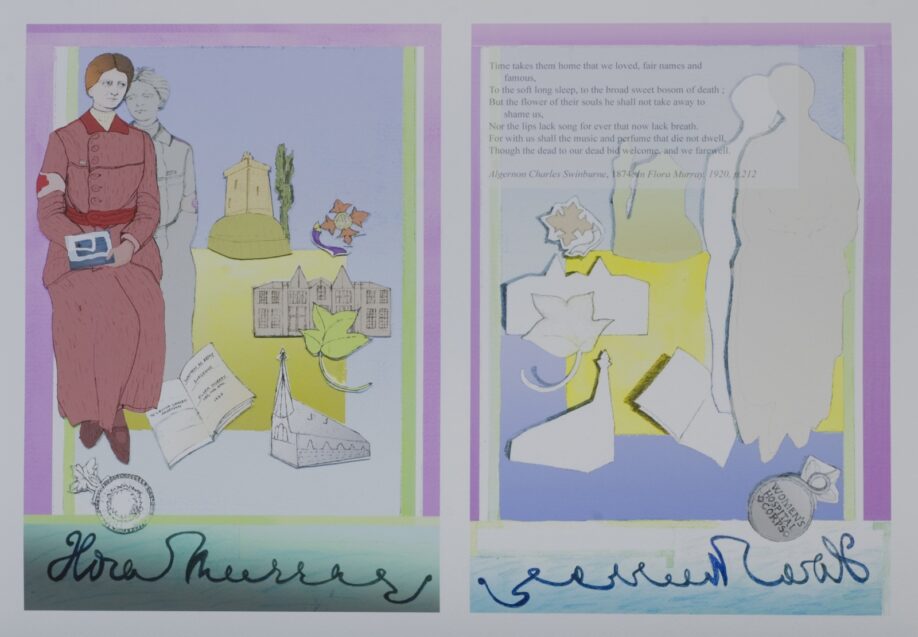
Digital pigment fine art print by Glasgow-based artist Fiona Dean. Flora Murray, a medical doctor and prominent member of the WSPU, campaigned against forcible feeding. She looked after many WSPU hunger-striking prisoners. In 1914, with the support of her long term companion Louisa Garrett Anderson, Flora established the Women’s Hospital Corps in Paris. In 1915 Flora and Louisa then set up a Military Hospital in London, which was run and staffed by known militant suffragists.
Torturing Women in Prison
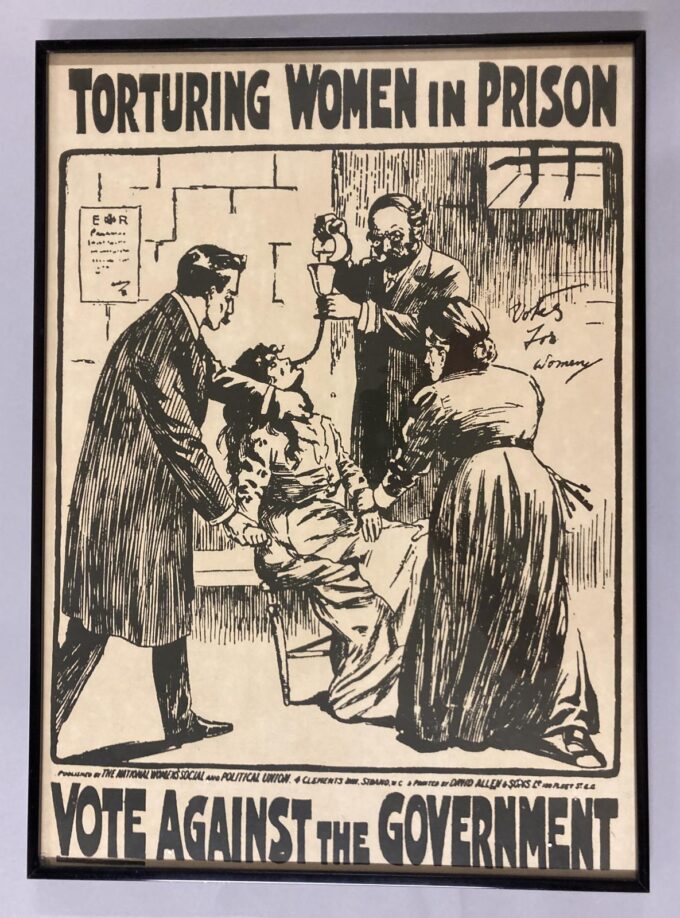
Replica by-election poster published in the Votes for Women newspaper on 29th October 1909. The image depicts the forcible feeding of a suffragette prisoner via a rubber tube that passed through the nose (or more usually the mouth) and into the stomach. The first woman in Scotland to be force fed was Ethel Moorhead. A militant suffragette, Ethel was imprisoned several times in Scotland before being force fed in Edinburgh’s Calton Jail in February 1914.
Postcard: Princess Sophia Duleep Singh
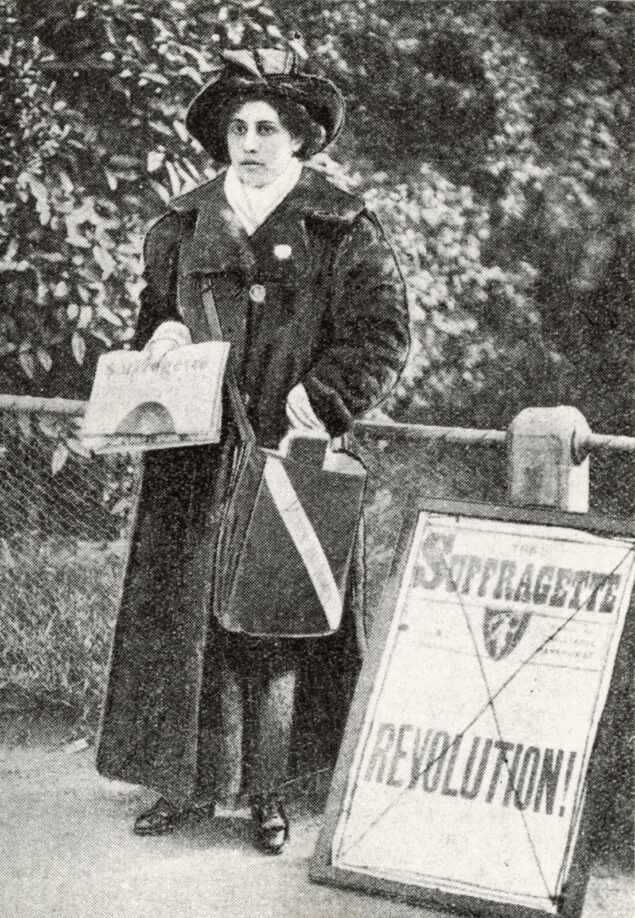
A postcard reproduced by the Museum of London with Princess Sophia Duleep Singh pictured selling The Suffragette in 1913.
March of Women
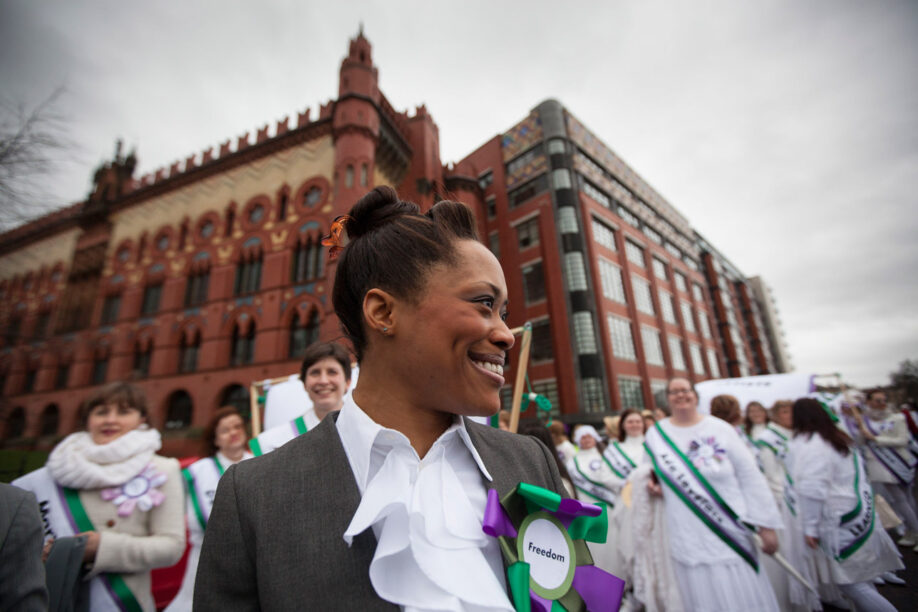
The March of Women pageant was a re-enactment of A Pageant of Great Women, developed by Glasgow Women’s Library in partnership with the Royal Conservatoire of Scotland. The original script was written by suffragette Cicely Hamilton in 1909.

